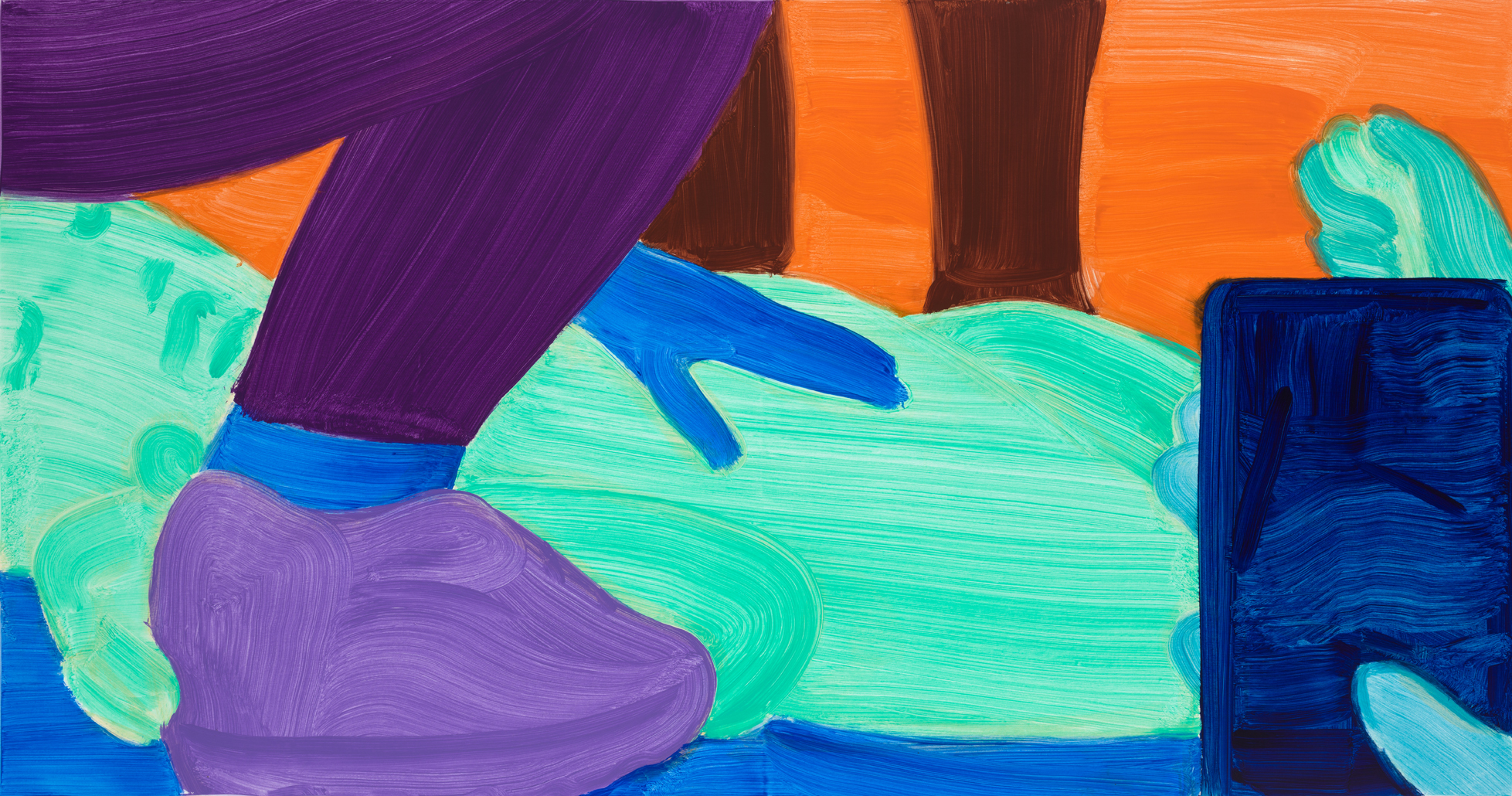I’ve always felt the practice of music is most closely aligned with perfumery. For one, they are both invisible mediums that are felt and not physically seen, relying on sensory tools that do not capture visuals but stimulate them. They exist through space, vibrations, and notes — tops, mids, and bases, delivered through a meticulous assemblage of instruments. Some are atmospheric, others weighty, some smooth, and others jagged, some deep, others hollow, yet these invariable forms combine to play a symphony — scoring the cinema of our emotions. In music and fragrance, you have progression and duration, a start and an ending. And, although pretty much all forms of art engage the mind and spirit in some capacity — love it or hate it, it can be said the practitioners of scent and sound are in direct conversation with the body. I can imagine the excitement of perfumers when synthetics were first artistically employed in perfumery; they must have had a similar experience to the early pioneers of electronic music that turned the first knobs on a Moog synthesizer. But in the case of Hatis Noit, her instrument is more primal and organic — the voice, probably the most democratic and universal of all musical tools. And, through this instrument on her album “Aura,” released on Erased Tapes Records UK in June 2022, she expresses “the universal sensations of being human such as love, nostalgia, awe, vital power… as well as the energy of nature – calm, fierce, soft, and dynamic.” When I spoke to Hatis about some of her inspirations and the textures around each track, it reminded me of some observations by Steven Friedson on the Vimbuza Ritual in “Dancing Prophets: Musical Experience in Tumbuka Healing,” where music is not only a score to a healing practice or ritual for summoning spirits but the spirit and medicine itself.
» THE ABILITY TO MOVE AND TRANSPORT ONE TO THE OTHER SIDE – PAST, MEMORY, AND SUBCONSCIOUS. «
FOLIE: When I first discovered your work, I was intrigued by its name and origin. Can you tell me the backstory of Hatis Noit?
HATIS NOIT: The name Hatis Noit is taken from Japanese folklore, meaning the stem of the lotus flower. The lotus represents the living world, while its root represents the spirit world; therefore, Hatis Noit connects the two. My music represents the same netherworld… the ability to move and transport one to the other side – past, memory, and subconscious.
FOLIE: What music elements help you move your listeners through past, memory, and subconscious?
HATIS NOIT: I create music using the voice only, with no lyrics but instead a universal but made-up language. Words cannot describe everything we feel. How can one accurately verbalize the sensation we feel when we’re newborns, and our mother holds us in her arms, and we feel her skin on our cheek? We clearly feel her warmth and humidity, some feeling of love from her, but it’s tough to verbalize perfectly. Music is a language that can translate that sensation, emotion, and the memory of love.
FOLIE: Is there a criterion for the music you give your vocals to or any musical terrains in which these sensations you want to communicate are most potent?
HATIS NOIT: Whatever calls for the composition calls for the song.
FOLIE: Where do you go for inspiration when you are stuck? Is there a particular place that you continuously draw energy, inspiration, and ideas from?
HATIS NOIT: Definitely, my birthplace Shiretoko in Hokkaido, Japan. Also, the universal sentiments and sensations of being human, such as love, nostalgia, awe, vital power, et cetera. As well as the energy of nature – calm, fierce, soft, and dynamic characteristics.
» I TRIED TO DESCRIBE A DYNAMIC NATURAL ENERGY AND POWER, AND THE PEOPLE’S CELEBRATION AND PRAYER FOR IT. «
FOLIE: Speaking of the energy of nature and your music, what are some inspirations behind songs, such as Aura, Jamon, and Sir Etok?
HATIS NOIT: Whenever I perform the song Aura, I remember getting lost in a forest in my birthplace Shiretoko, Hokkaido. I felt as if I was close to my death; I could feel myself dissolving into and becoming a part of nature rather than just being an individual. This sense of awe and peace found there is always the place where I start making music from. And so it felt like a natural opening to the journey of this album.
As for “Jamon,” it is the period in Japanese prehistory before proper agriculture started. Jomon culture, including its dynamic style of art — surprisingly, it was not like minimal Zen style at all, was one of the biggest inspirations of my favorite Japanese artist Taro Okamoto. He believed that people in the Jomon period were still connected to natural spirits and that their fierce energy through hunting and gathering made their art so special and esoteric. In this piece, I tried to describe a dynamic natural energy and power and the people’s celebration and prayer for it.
“Sir Etok” is the original name for Shiretoko in Ainu, the language of the indigenous people in Hokkaido. This song is the oldest song on the album. Thinking of wild nature and animals in forests, especially around my birthplace Shiretoko, and remembering their conversation through sounds — the howls of animals, the twittering of birds, the blowing of the wind, springing water, flowing down the river, wetting the ground… this always makes me feel so energized and soothed. So whenever I feel lost, I try to connect to that energy again.
FOLIE: I would like to fire off a few abstract questions that explore some of the olfactive dimensions of your work, as if we were building a scent profile, and explore how you would imagine music aromatically.
FOLIE: What would the smell of music be for you?
HATIS NOIT: I think some wood, earthy herbal smell.
FOLIE: Are there any particular objects you associate with music?
HATIS NOIT: Human skin, veins, wood, leaves.
FOLIE: What places or locations come to mind when you think of music?
HATIS NOIT: Definitely the forest and river streams.
FOLIE: What colors and textures come to mind when you think of Aura, specifically your album?
HATIS NOIT: Cyan, turquoise blue, vivid yellow, and red, as found in the cover artwork of my album. As for textures, something bold, strong, and rich.
FOLIE: When you listen or reflect on the tracks you created for Aura, What shapes come to mind?
HATIS NOIT: *Laugh* Organic Streams.
» EXPRESSING HUMANITY AND COMPASSION IS THE MOST IMPORTANT THING AS AN ARTIST. «
FOLIE: Often, in perfumery and fragrance briefings, there is this inevitable question, “What are your earliest scent memories,” but I would love to direct this more to the domain of ‘Aura.’ What tracks specifically evoke a memory for you?
HATIS NOIT: I would say “Angelus Novus” and “Inori”; they are all about memory. “Angelus Novus,” meaning ‘New Angel’ in Latin, is a mono print by the artist Paul Klee, which appears in the German philosopher Walter Benjamin’s essay ‘Angel of History.’ When I wrote this song, I remembered the image of an angel flying against the rough winds of history, resonating very strongly with personal and social struggles. The song has a very intimate, introverted ending, as I wanted it to end with a place of healing. And ‘Inori’ means ‘prayer’ in Japanese and is dedicated to the people of Fukushima.
Expressing humanity and compassion is the most important thing as an artist.
FOLIE: Thank you so much, Hatis, for this conversation. I am humbled and grateful for the opportunity to explore the realms of this album olfactively. I so look forward to smelling this album review. But for now, I am so excited to return to the music again this evening… with all this new texture and understanding of your work’s artistic framing and aromatic ingredients.






